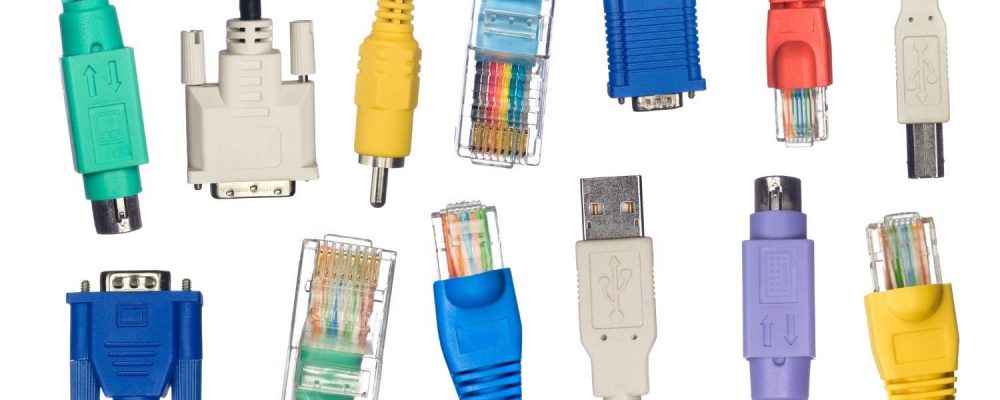Summary : Choosing the right computer network cables is crucial for building a reliable and efficient network infrastructure. The four main types: Coaxial, Fiber Optic, Shielded Twisted Pair (STP), and Unshielded Twisted Pair (UTP) each serve specific purposes, from long distance transmission to interference prone environments. High quality cabling enhances connectivity, reliability, scalability, security, and cost efficiency while preparing businesses in New Jersey and Pennsylvania for future technologies. Understanding cable types ensures optimal performance and supports seamless secure operations across growing networks.

Choosing the right type of computer network cable for your New Jersey or Pennsylvania business is pivotal in establishing a reliable network infrastructure that underpins various business functions. The array of available cables serves diverse industry needs, with each type offering distinct advantages and considerations.
UTP cable is commonly used in ethernet networks for data transmission. It is made of multiple unshielded twisted pairs of copper cable. A shielded twisted pair (STP) cable has a metal shield for better protection against signal loss and interference.
Optical fibers, known for their high transmission speed over long distances, surpass the capabilities of traditional copper cables. Different colored cables with varying speeds are important for networks. UTP cables are affordable, while STP cables are better for places with interference. Understanding the nuances among different types of network cables is essential for ensuring optimal performance and reliability within complex networking setups.
Coaxial cables have a copper conductor in the middle, insulation, and a metal shield. They are known for resisting interference. This design makes them a popular choice for telecommunication applications where data integrity is paramount. Coaxial cables are strong and can transmit data over long distances. Therefore, they are commonly used for internet and cable TV networks.
Fiber optic cables, comprising a glass core and multiple protective layers, transmit light instead of electronic signals. This property ensures minimal susceptibility to electrical interference, which is a common issue with other cable types. Fiber optic cables are great for fast internet, phone calls, and cable TV. They use glass to send light signals quickly and accurately over long distances.
Their ability to maintain signal strength over vast distances, coupled with their immunity to interference, contributes to their growing popularity in modern networking environments. Ethernet cables are a good choice for connecting networks between buildings. They can handle moisture and electrical problems, which shows their reliability in tough conditions.
Shielded Twisted Pair (STP) cables, also known as Ethernet cables, utilize copper wiring with an added external shield for grounding. These cables are great for reducing interference, extending connections, and creating a reliable network environment. The shielding layer effectively reduces electrical noise, making STP cables perfect for use in environments with potential electromagnetic interference (EMI).
This includes setups with many electronic devices or large machinery that may disrupt the data transmission. As such, STP cables are a trusted solution for businesses requiring reliable data flow in complex, interference-rich networking environments.
Unshielded Twisted Pair (UTP) cables, another variant of Ethernet cables, are composed of twisted pairs of conductors. The twist rate (how many twists per meter) varies among different categories of UTP cables and impacts their ability to transmit data over distance.
The twisting helps to counteract electromagnetic interference from external sources, thereby improving the integrity of the data transmission. UTP cables do not include shielding, making them lighter, more flexible, and less expensive than STP cables.
However, this lack of shielding makes UTP cables more susceptible to electromagnetic interference than their shielded counterparts. Despite this, their affordability and easy installation make them popular for Ethernet and phone connections, especially in offices.
Understanding the strengths and applications of each type of computer network cable empowers businesses to make informed decisions when establishing a robust network infrastructure. Let’s delve deeper into the specifics of each type:
Future Preparedness: As the world becomes more digitally connected, businesses that invest in reliable network cabling will be well-positioned to leverage emerging technologies such as IoT, AI, and cloud computing, giving them a competitive edge.
"*" indicates required fields
Scott Fcasni is the driving force behind Shock I.T. Support’s commercial datacomm cabling division, delivering expert solutions that power reliable, high-performance network infrastructures. With extensive experience in structured cabling and a commitment to precision, Scott ensures that every project—whether for small businesses or large enterprises—meets the highest standards of quality and scalability.